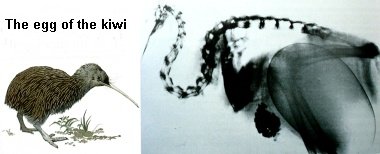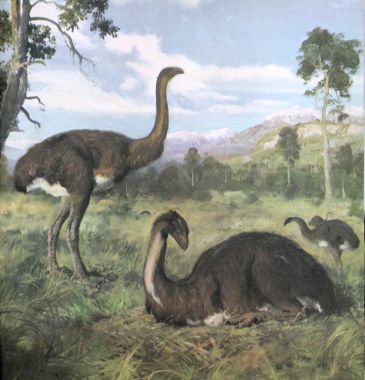
After Whitfield: De evolutie van het leven
(1994)

After Spinar/Burian: Leven in de oertijd
(1974)
Stephen J. Gould has described another example of a trait not (directly) caused by natural selection. The kiwi in New Zealand is a miniature ostrich which lays gigantic eggs. Such an egg is about 15% of the body weight. It has been assumed for a long time that this trait has evolved by natural selection because it should give an advantage to the species: the young animal had a lot of food at its disposal. But it can be explained otherwise.
The kiwis descend from a giant ostrich like the Moa (Dinornis maximus: picture on the right), which produced very large eggs. This species went extinct around 1500, possibly as a consequence of hunting by prehistoric inhabitants, coming from Polynesia.(further reading on the right)
Calculations show that if a Moa would decrease to the size of a kiwi , the giant Moa egg would be transformed into the still big kiwi egg.
This is called allometric growth. Body parts do not (always) increase or decrease in the same ratio as the total body. This is the way in which the extinct giant deer had got his enormous antlers. During the gradual increase of the body size, the antlers will have increased relatively faster. Sexual selection will have favoured this process because the females preferred the males with the largest antlers.
Know more?
Dinornis, the
giant Moa
The Giant Deer
or Irish Elk